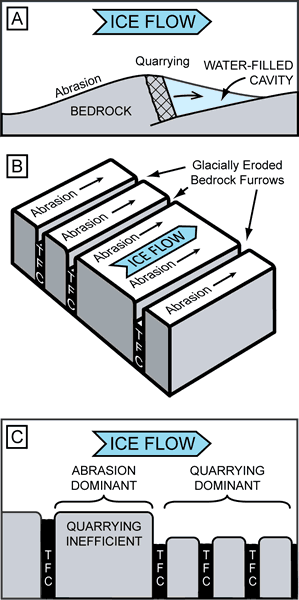
Figure 5.
(A) The classic model of glacial erosion: Abrasion occurs on the stoss side of bedrock undulations, while quarrying occurs in the lee side, facilitated by water-pressure fluctuations in the subglacial cavity. (B) Glacial erosion in cases where tabular fracture clusters (TFCs) are oriented parallel to ice flow. While erosion is effective within individual TFC zones, glacial erosion is limited to abrasion on the top surface (e.g., the Budd Lake area). (C) Glacial erosion in cases where TFCs are oriented orthogonal to ice flow. Quarrying is efficient where TFCs are closely spaced (e.g., inferred for Tuolumne Meadows), but glacial erosion is restricted to abrasion where TFCs are widely spaced (e.g., up-ice section of Lembert Dome; Dühnforth et al., 2010).